The Fossil Gen 5 Carlyle is a great smartwatch that functions as a jack-of-all-trades. But a Fitbit might make you a fitter person with its health focus. Read this in-depth comparison of these two smartwatches to help with deciding which is the best option for you. Yes, we used both watches extensively.
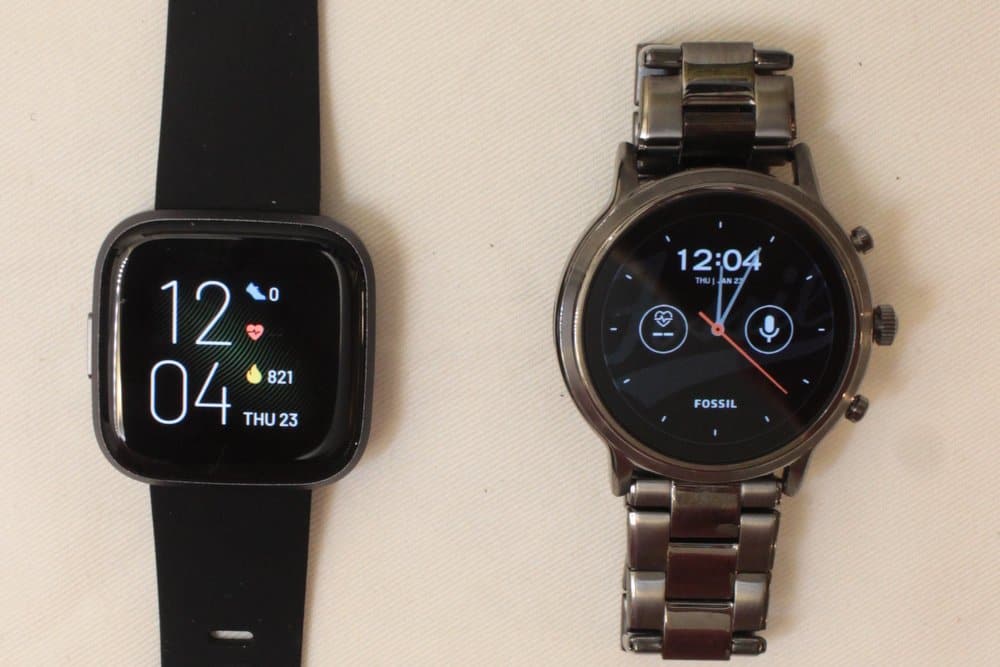
Wear OS watches like the Fossil Gen 5 Carlyle are so similar it’s hard to eke out major differences once the differences in hardware is spelled out.
Comparing the Fitbit Versa 2 is a significant departure from a Wear OS versus Wear OS comparison because Fitbit has an excellent OS that would challenge the Fossil Carlyle.
The Versa 2 is really meant as a smartwatch for sport-oriented folks while the Fossil Carlyle is a more general watch that balances productivity with workout tracking.
Contents
As a productivity booster…

The Fossil Carlyle is an amazing watch for productivity because it has a full suite of hardware accompaniments that allow it to do tasks that the Fitbit cannot do, such as make calls as in the above picture.
Apps

The Carlyle comes with Google’s Wear OS, which means that you will be able to access many apps that cannot be found on Fitbit’s line of wearables.
This includes apps such as Google Maps, Keep and Translate. There’s even a web browser for the Carlyle, although it does not function very well given the small screen. And because the Carlyle has a speaker, you can also make and take calls from it.
Fitbit’s line of apps are very limited. Compared to the Wear OS, the amount of third-party apps you can download will not really help you much in terms of productivity unless you need a calculator, Starbucks Card app, United Airlines app or a flashlight.
Winner: Fossil Gen 5 Carlyle
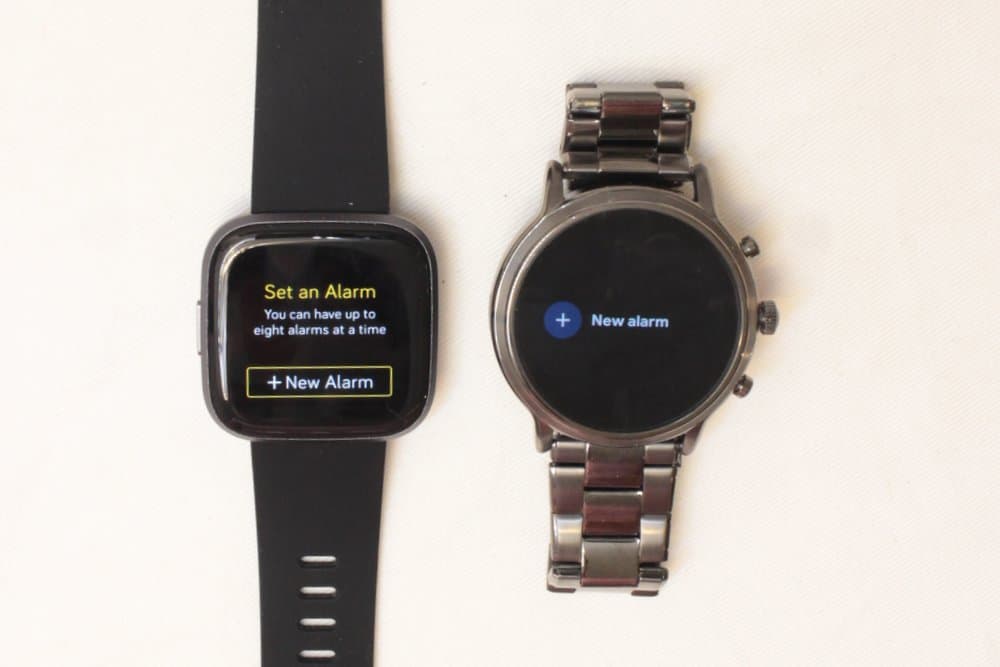
Battery Life
Both watches come with great battery life that will last past a day without charging. Having this buffer is great because sometimes you will use the watches in a more battery-intensive mode such as when you use Google Maps (screen is always on) on the Fossil Carlyle or during workouts on the Fitbit.
The Fitbit does not have any significantly battery-draining functions such as an integrated GPS that the Carlyle has, so that helps it last for at least two days minimum.
The Carlyle’s battery can fluctuate significantly based on what you do but Fossil has also put in three battery management modes that optimizes these functions.
Winner: Fitbit Versa 2
Text Input
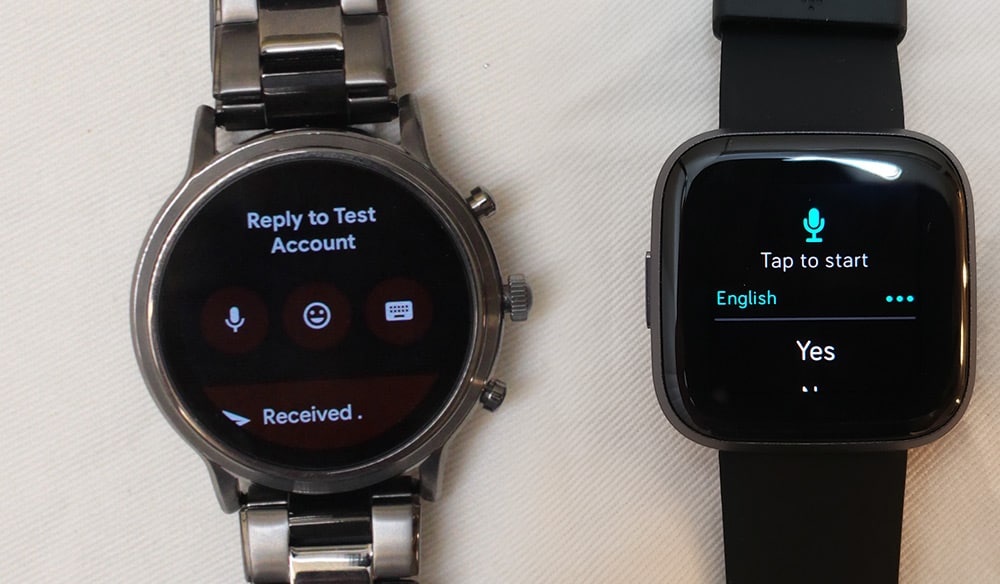
An added benefit of being within Google’s ecosystem is that you get access to Google Assistant with the Fossil Carlyle. Google Assistant provided much better information and is a better speech-to-text converter.
This is particularly notable when you are replying to a notification — which can only be done on an Android. Apple iOS users can only read the notification.
When you reply to a notification on the Carlyle, you get a choice of using canned responses, emojis, speech-to-text input or keyboard input. The speech-to-text input is quite reliable with Google Assistant and will be able to capture what you’re trying to say. The keyboard is also easy to use and quite accurate, plus you can also swipe your finger around the screen to form words.
On the other hand, Alexa performs OK, but just a bit less accurate than Google Assistant. The more egregious issue is that there’s no other way to reply to a text but through Alexa. If you’re looking to reply with one-liners, Alexa performs OK.
Winner: Fossil Gen 5 Carlyle
Receiving information from Assistant or Alexa
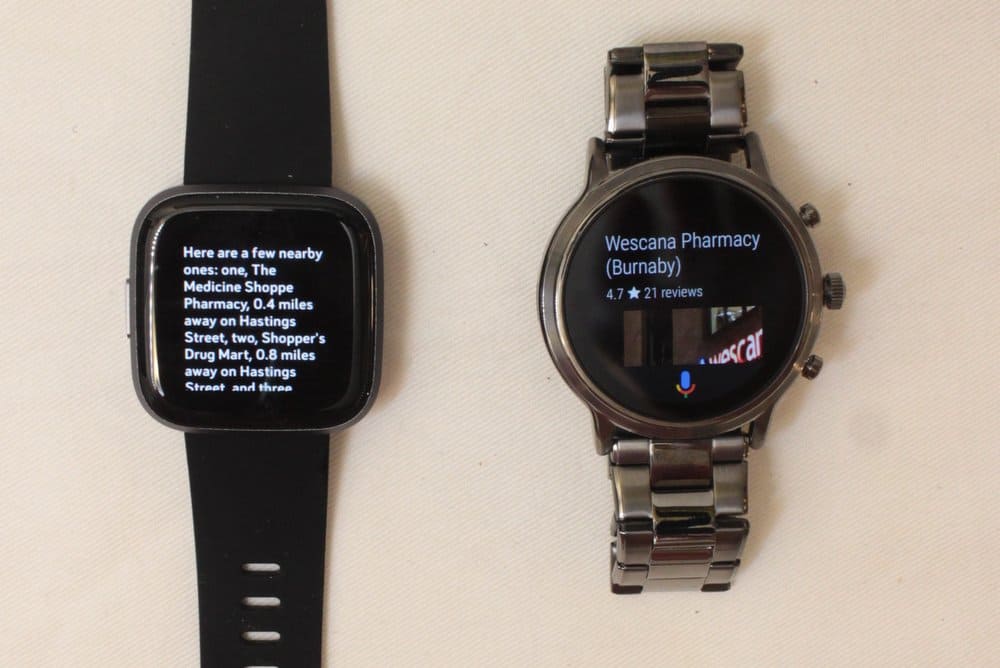
Sometimes you want quick answers or directions. Both the Google Assistant on the Carlyle and Alexa on the Versa 2 can do that but the results strongly favours the Assistant. As a test, I asked both what a dog was and Google provided an image of a dog while Alexa said “a customer said…”
In searching for directions, too, Alexa provides inferior information. I asked both watches for directions to the closest pharmacy and Alexa gave me a list, their distances from me, but no other useful information as to how to get there. Whereas Google Assistant showed a photo of the pharmacy and it could also use Google Maps to navigate me there.
Winner: Fossil Gen 5 Carlyle (Google Assistant)
As a fitness assistant…
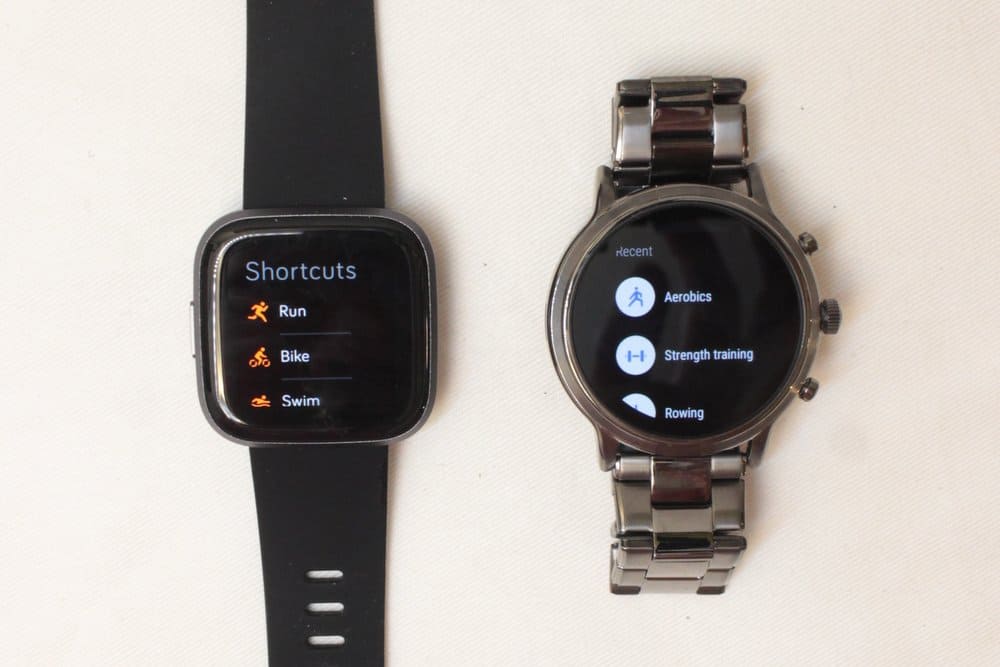
This is where the tables are turned unless you need an integrated GPS.
Integrated GPS
The Fitbit Versa 2 can’t win in this area because it doesn’t have an integrated GPS. For people looking to do a workout without carrying your phone for GPS functionality, you’ll have to go with the Carlyle (or the many, many watches on the market with an integrated GPS).
It’s pretty mystifying as to why Fitbit left out this feature on a watch that is primarily aimed at fitness-focused folks.
Winner: Fossil Gen 5 Carlyle
User interface
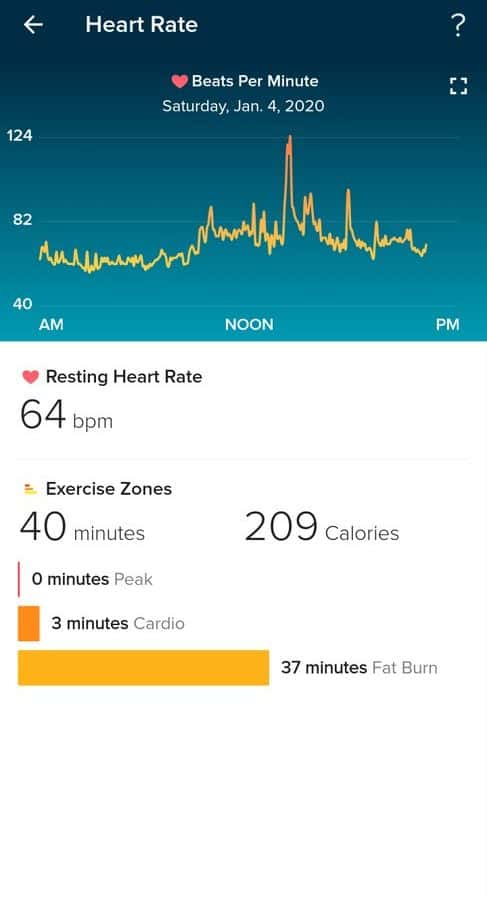
The design, layout and colours of the Versa 2 is superior both on the watch and on the app. The app menu of the Versa 2 is laid out in a two-by-two grid while on the Carlyle it’s a scrolling list which you can scroll with the rotating crown or with your finger. I definitely preferred the Versa 2 for this because it’s faster and easier to choose the app you want.
The Versa 2 also only has one button which is used as a back key sometimes. When tracking a workout, it can be used to switch between different metrics shown to you.
Fitbit’s smartwatch app also goes into deeper detail on the activities you’ve done as compared to Google Fit, the fitness counterpart for the Carlyle. Some differences between them include the categorization of your heart rate data into fat burn, cardio and peak zones, whereas the Fit doesn’t tell you this. I also liked that Fitbit automatically detects when you’re sleeping and logs the data and then categorizes it so you know how deep your sleep is.
Winner: Fitbit Versa 2
Workout options

Google Fit app has nearly 50 workout activities, which is quite the overkill. The Fitbit has about 12 activities by default and that’s more than enough to cover the more common activities.
One jarring difference is the lack of a swimming activity in Google Fit. While the Carlyle is a watch that Fossil says you can take into shallow water, you will have to download a third-party app in order to record your swims. The Fitbit Versa 2 does have a swimming mode which helps you calculate how many laps you have done and how long you have been working out.
It must feel very counter-instinctual to bring a $179 Versa 2 or a $295 Carlyle into the swimming pool, but I have tested both in the water and they came out fine. They come with a one year and two year warranty respectively, with the Carlyle providing further peace of mind by stating in its warranty terms and conditions that it covers water damage for water-resistant watches.
You can also subscribe to Fitbit Premium if you want further data analysis or coaching on your sport activities, whereas there is no such feature on Carlyle. Some of Fitbit Premium is pure data gatekeeping (hiding data already present on the watch until it’s unlocked), while others are more value-added.
Winner: Fitbit Versa 2
Verdict
The $295 price tag for the Fossil Carlyle means it’s trying to compete with the big boys. It is indeed a full-fledged smartwatch with significant capabilities that the Versa 2 does not have.
The Versa 2 comes in at $179, which is a savings of over $110. It’s quite a good chunk of change.
At the end of the day, it depends on what your purpose for buying a watch is. If it is there to motivate you to exercise, or to keep track of your workout data, then the Fitbit Versa 2 will function even better than the Carlyle would, assuming you do not need an integrated GPS.
On the other hand, the Fossil Carlyle is an excellent watch for productivity with its wide range of apps, integrated GPS, speaker and Google Assistant.




